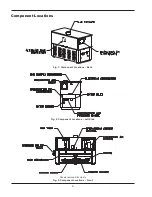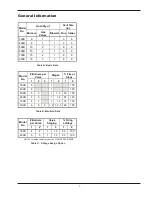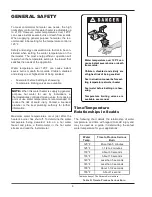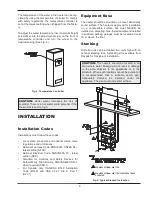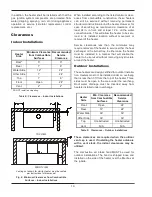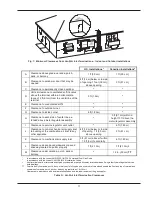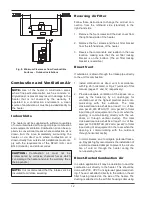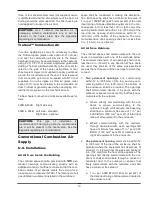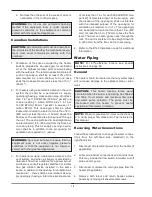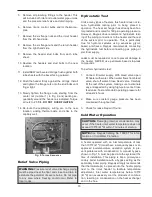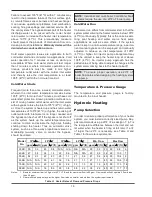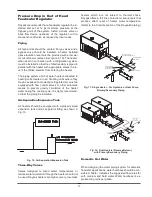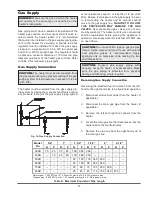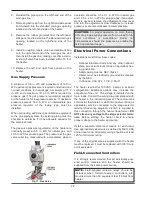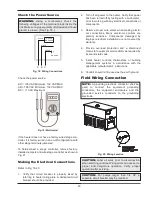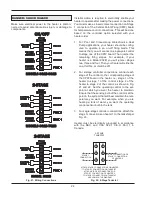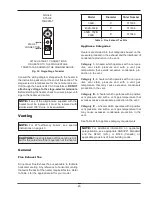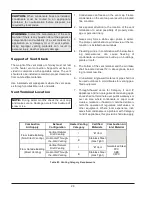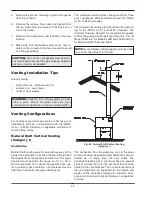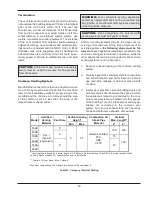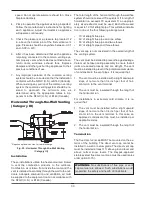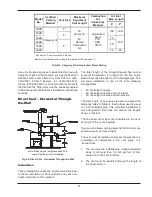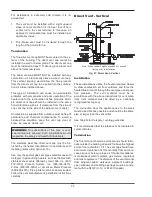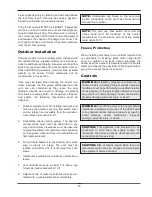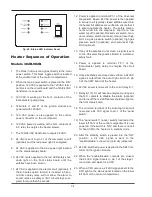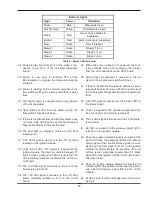
20
Raypak water heaters can operate lime/scale-free
using potable water with a hardness not exceeding 25
grains per gallon. Proper operation is achieved by set-
ting the temperature rise/water flow per the guidelines
in the installation instructions. If the hardness of the
water exceeds the maximum level of 25 grains per gal-
lon special measures must be taken to adjust flow and
temperature rise. Water should be softened to a hard-
ness level no lower than 5 grains per gallon. Water
softened as low as 0 to 1 grain per gallon may be
under-saturated with respect to calcium carbonate
resulting in water that is aggressive and corrosive.
pH of Water
pH is a measure of relative acidity, neutrality or alka-
linity. Dissolved minerals and gases affect water’s pH.
The pH scale ranges from 0 to 14. Water with a pH of
7.0 is considered neutral. Water with a pH lower than
7 is considered acidic. Water with a pH higher than 7
is considered alkaline. A neutral pH (around 7) is desir-
able for most potable water applications. Corrosion
damage and water heater failures resulting from water
pH levels of lower than 6 or higher than 8 are non-war-
rantable. The ideal pH range for water used in a
storage tank or a copper water heater system is 7.2 to
7.8.
Total Dissolved Solids
Total dissolved solids (TDS) is the measure of all min-
erals and solids that are dissolved in the water. The
concentration of total dissolved solids is usually ex-
pressed in parts per million (ppm) as measured in a
water sample. Water with a high TDS concentration
will greatly accelerate lime and scale formation in the
hot water system. Most high TDS concentrations will
precipitate out of the water when heated. This can
generate a scale accumulation on the heat transfer
surface that will greatly reduce the service life of a
water heater. This scale accumulation can also
impede adequate flow of water and may totally block
the water passages in the tubes of the heat exchang-
er. A heat exchanger that is damaged or blocked by
lime/scale accumulation must be replaced. Failure of a
water heater due to lime scale build up on the heating
surface is non-warrantable. The manufacturer of the
water heater has no control of the water quality, espe-
cially the TDS levels in your system. Total dissolved
solids in excess of 2,500 ppm will accelerate lime and
scale formation in the heat exchanger. Heat exchang-
er failure due to total dissolved solids in excess of
2,500 ppm is a non-warrantable condition. Raypak
offers basic temperature guidelines for operation of a
potable water heater on normal to moderate levels of
hardness and solids but levels of hardness and total
dissolved solids beyond normal limits for operation will
require special setup and operation.
NOTE:
Failure of a heat exchanger due to lime
scale build-up on the heating surface, low pH or
other chemical imbalance is non-warrantable.
Table J: Water Chemistry
Recommended Level(s)
Fiberglass Pools
Fiberglass Spas
Other Pool and Spa
Types
Water Temperature
68-88°F (20-31°C)
89-104°F (31-40°C)
68-104°F (20-40°C)
pH
7.3-7.4
7.3-7.4
7.6-7.8
Total Alkalinity (ppm)
120-150
120-150
80-120
Calcium Hardness (ppm)
200-300
150-200
200-400
Salt (ppm)
3000 Maximum
3000 Maximum
3000 Maximum
Free Chlorine (ppm)*
2-3
2-3
2-3
Total Dissolved Solids
(ppm)
1500 Maximum**
1500 Maximum**
1500 Maximum**
*Free Chlorine
MUST NOT EXCEED 5 ppm!
**In salt water chlorinated pools, the total TDS can be as high as 4500ppm
NOTE:
The allowable concentrations of salt and of the Total Dissolved Solids are lower for the Hi Delta than
for a typical residential pool heater, due to the higher water temperatures at which a Hi Delta operates.
Summary of Contents for HI DELTA 302B
Page 45: ...45 Wiring Diagram...
Page 59: ...59...

